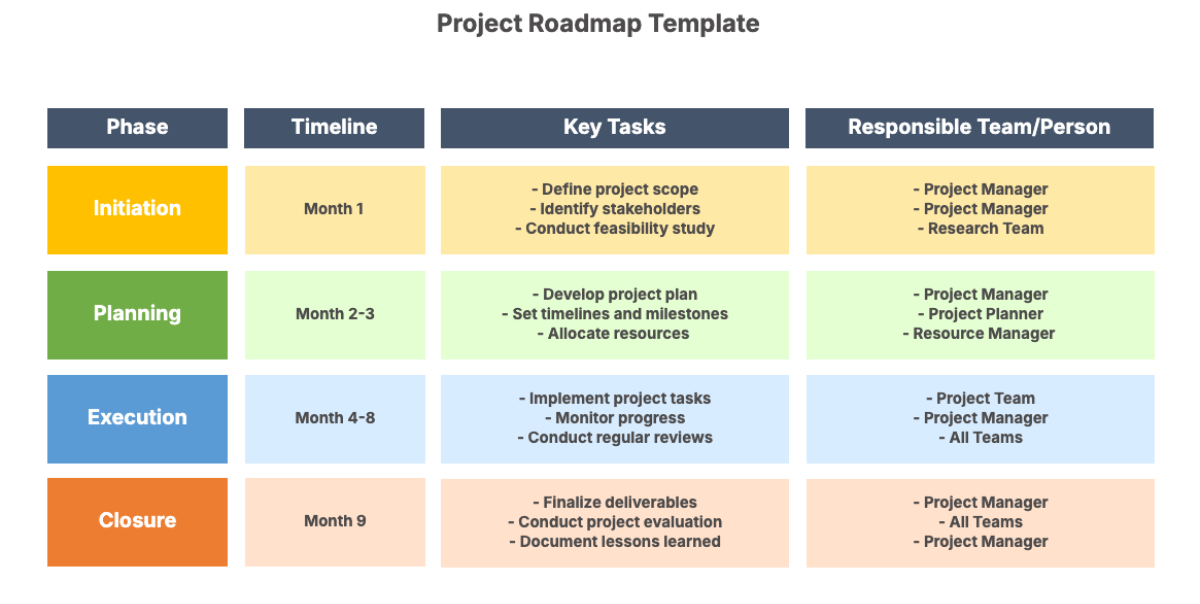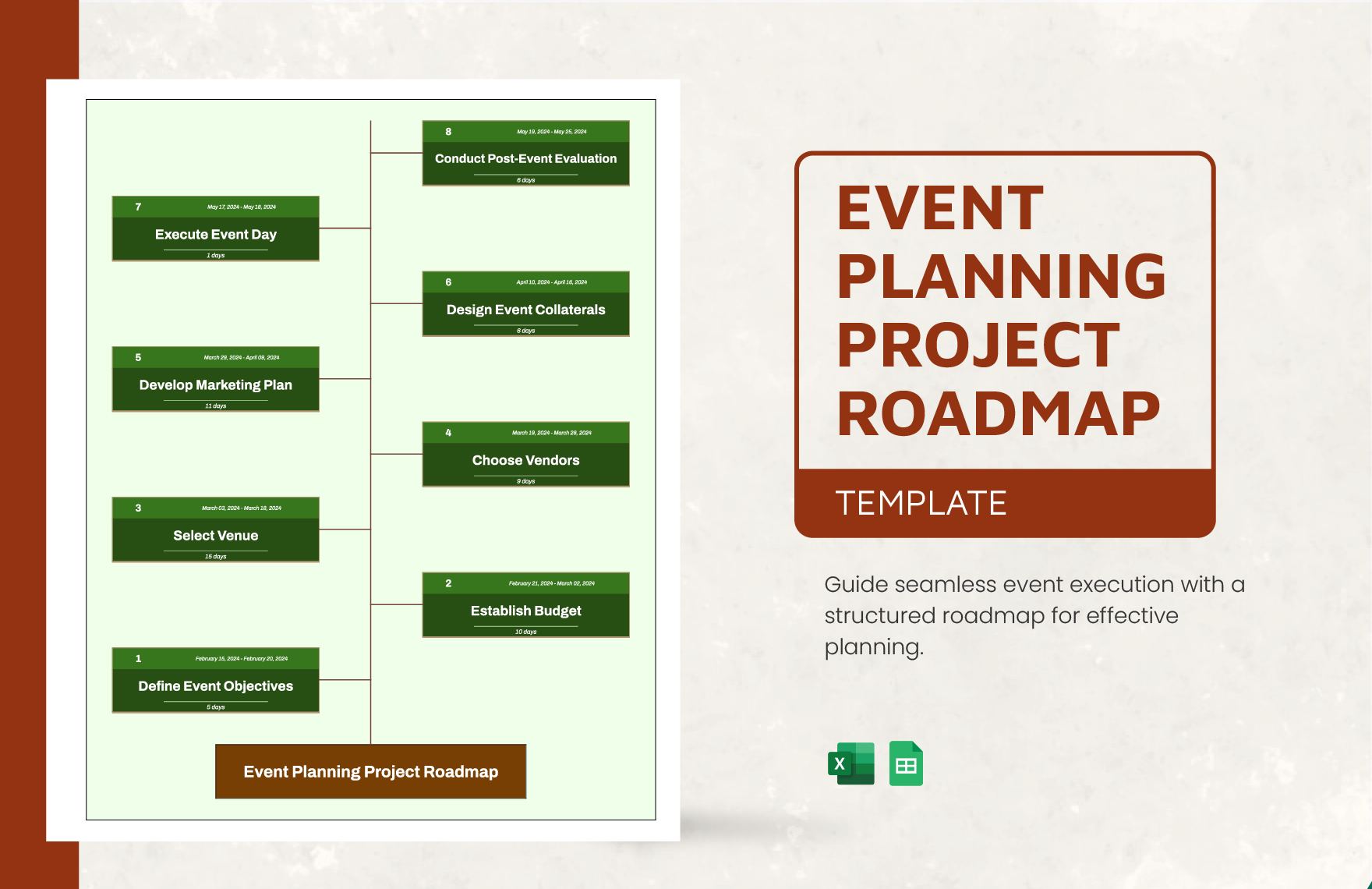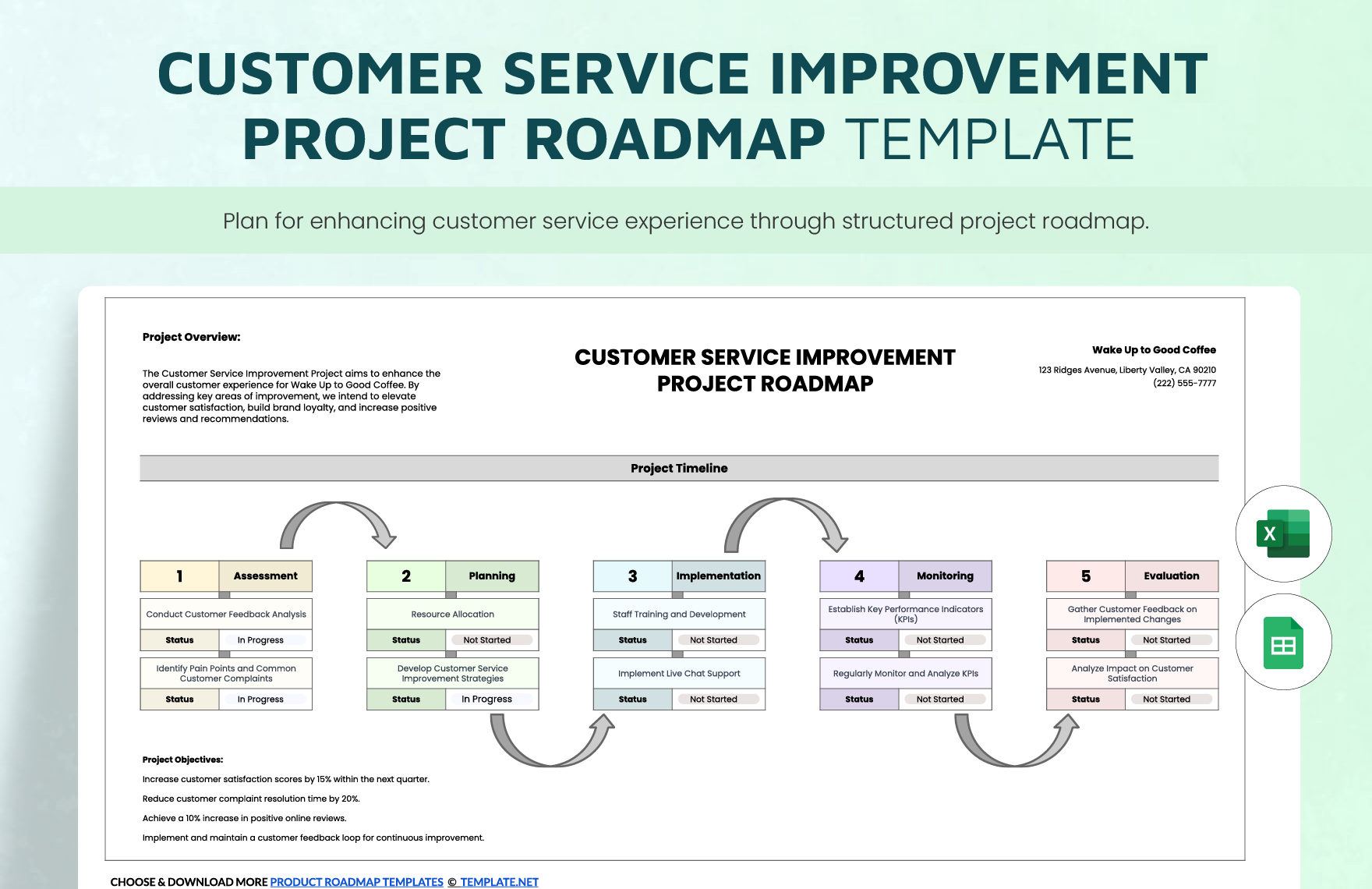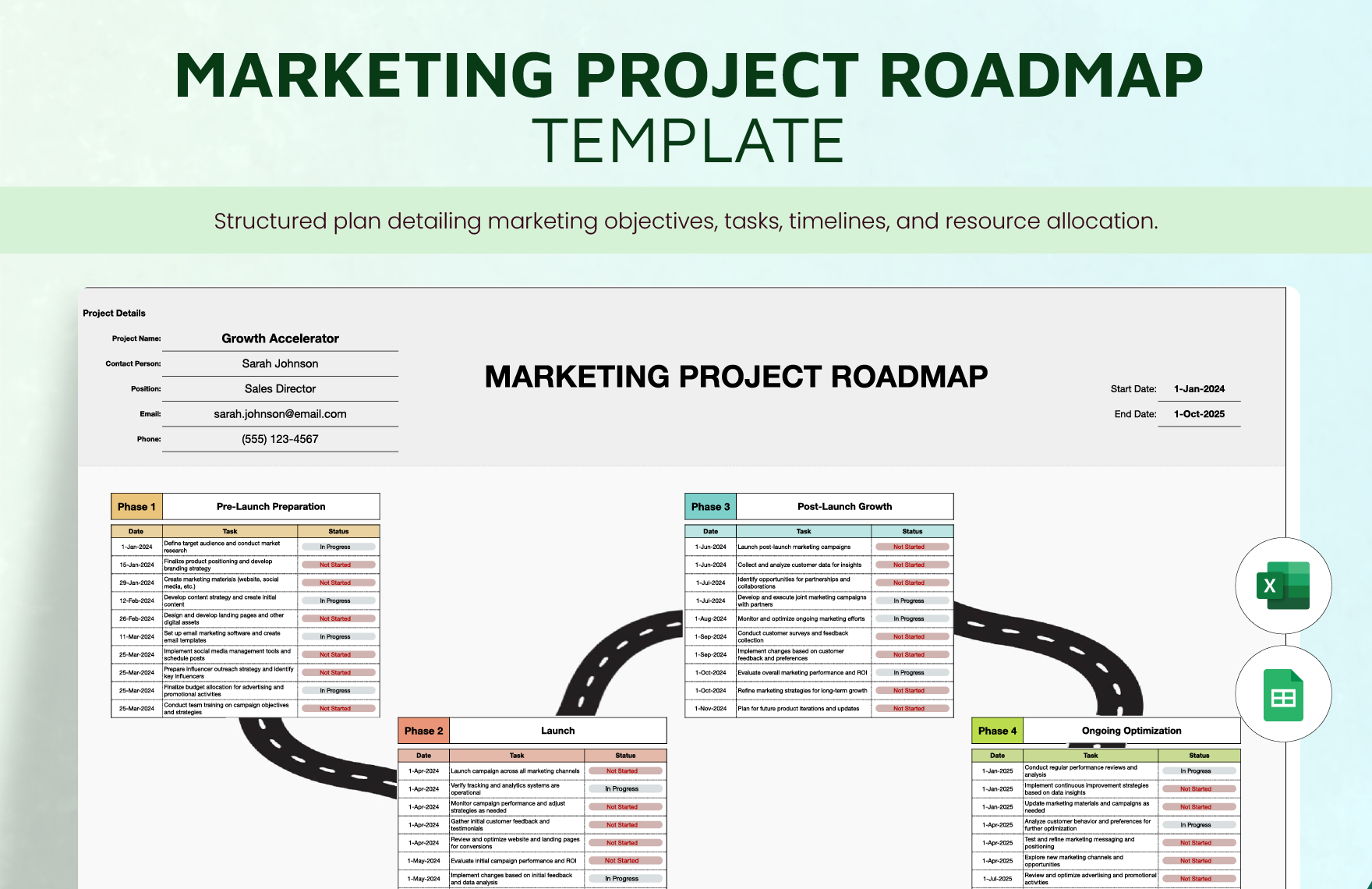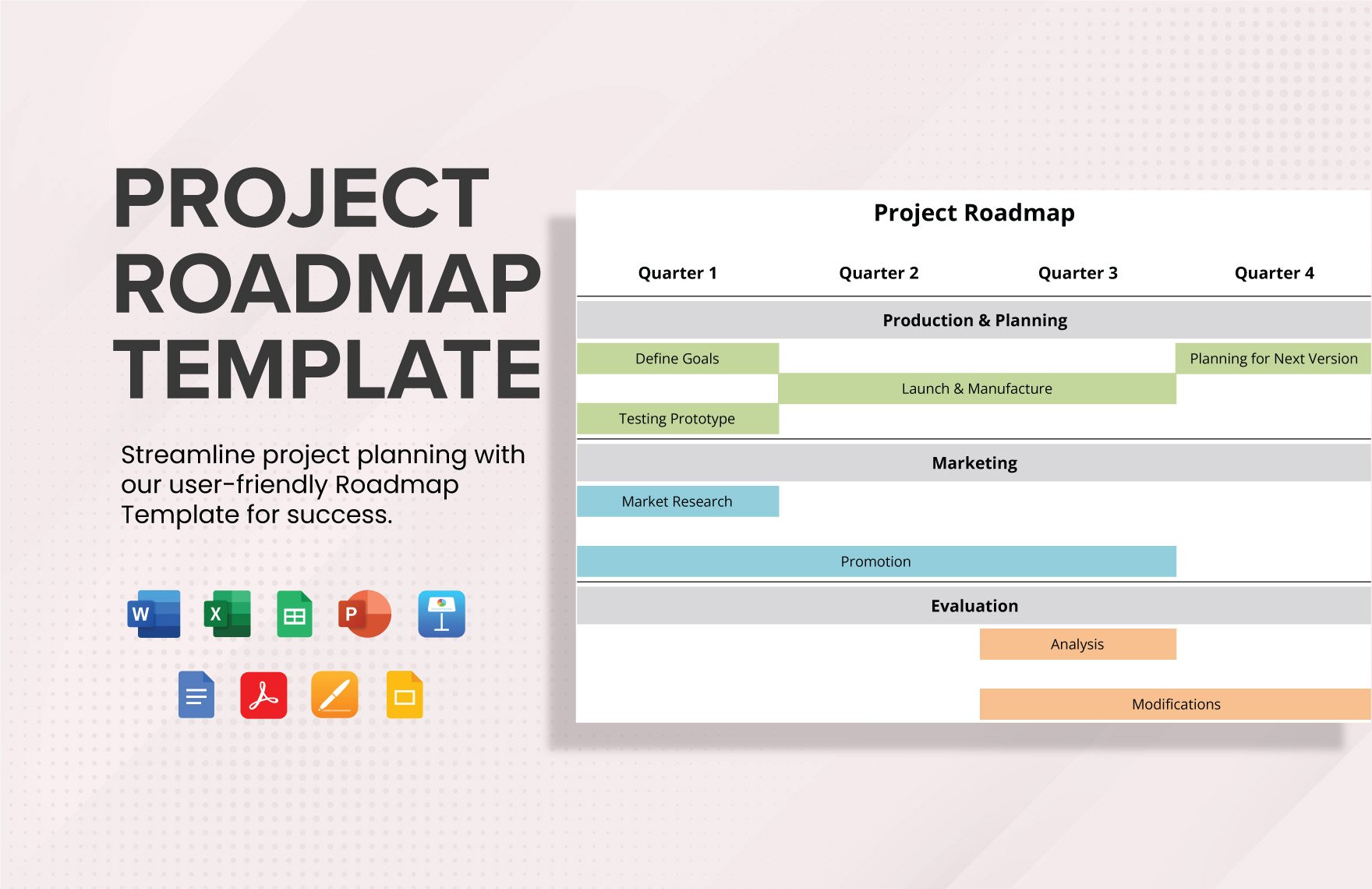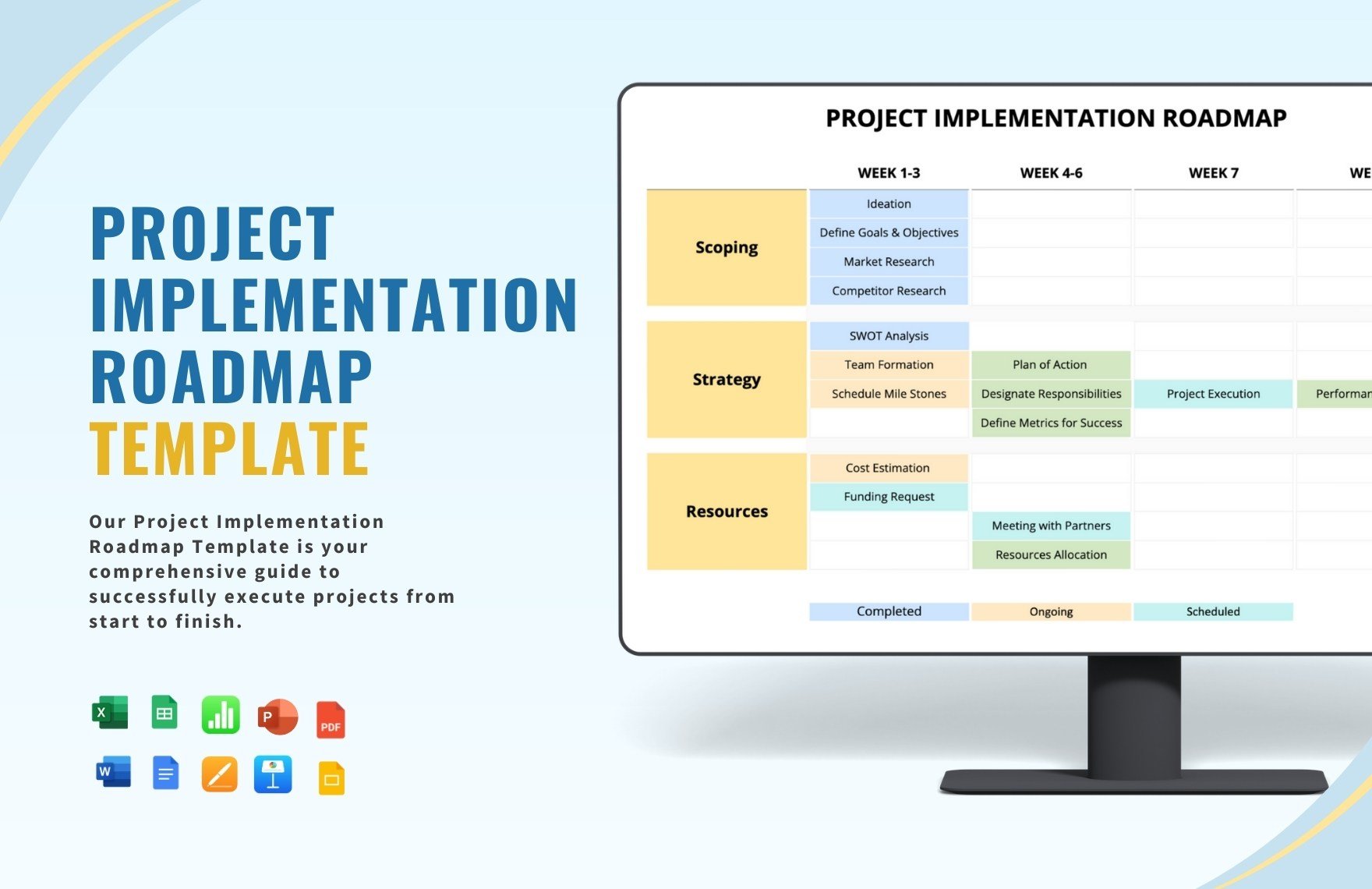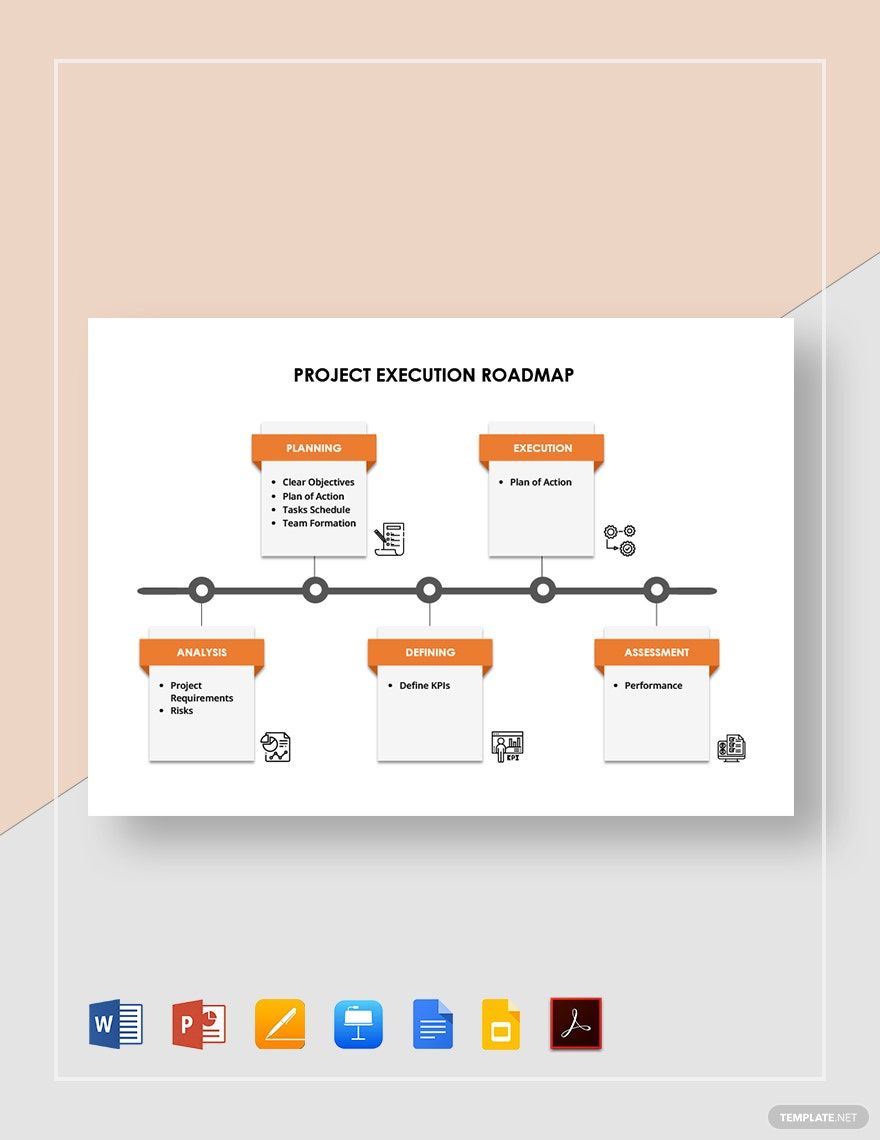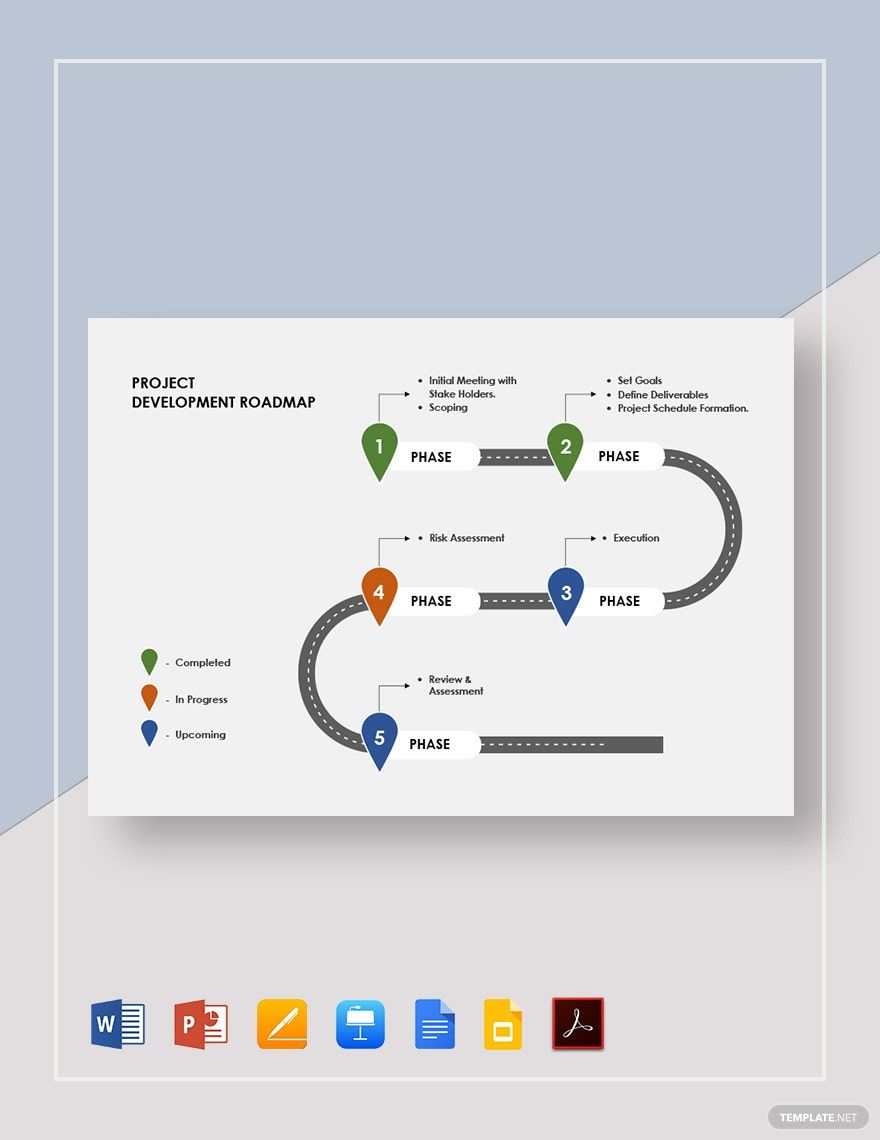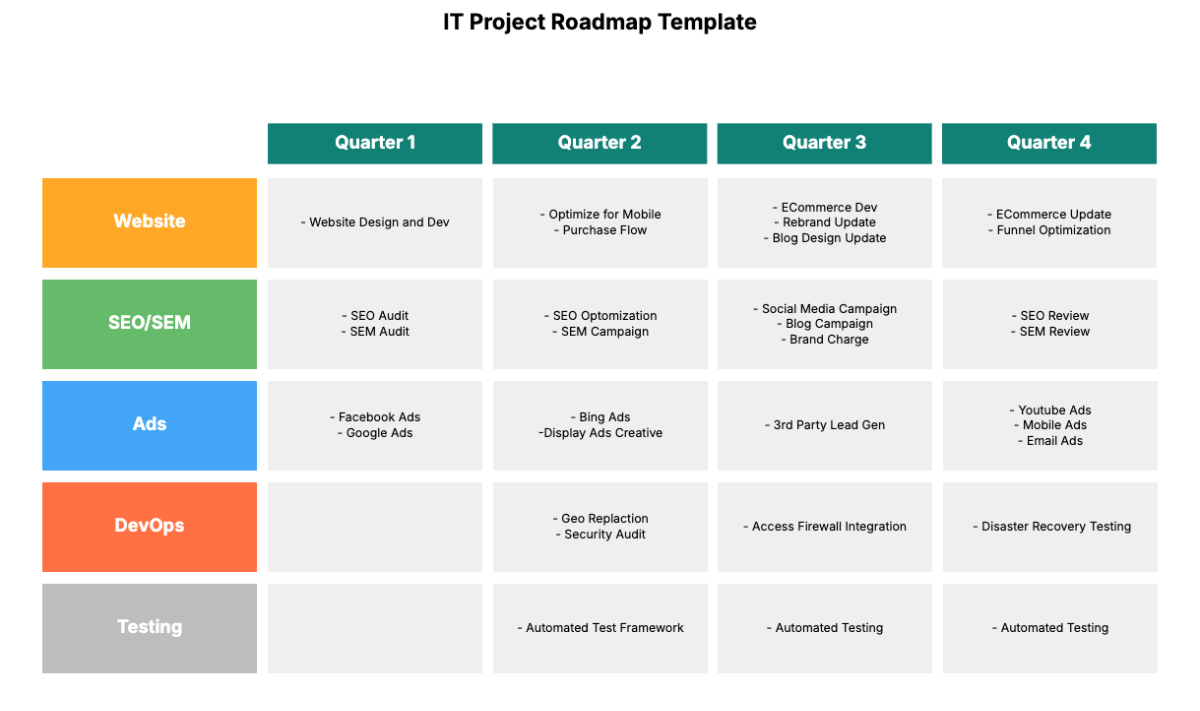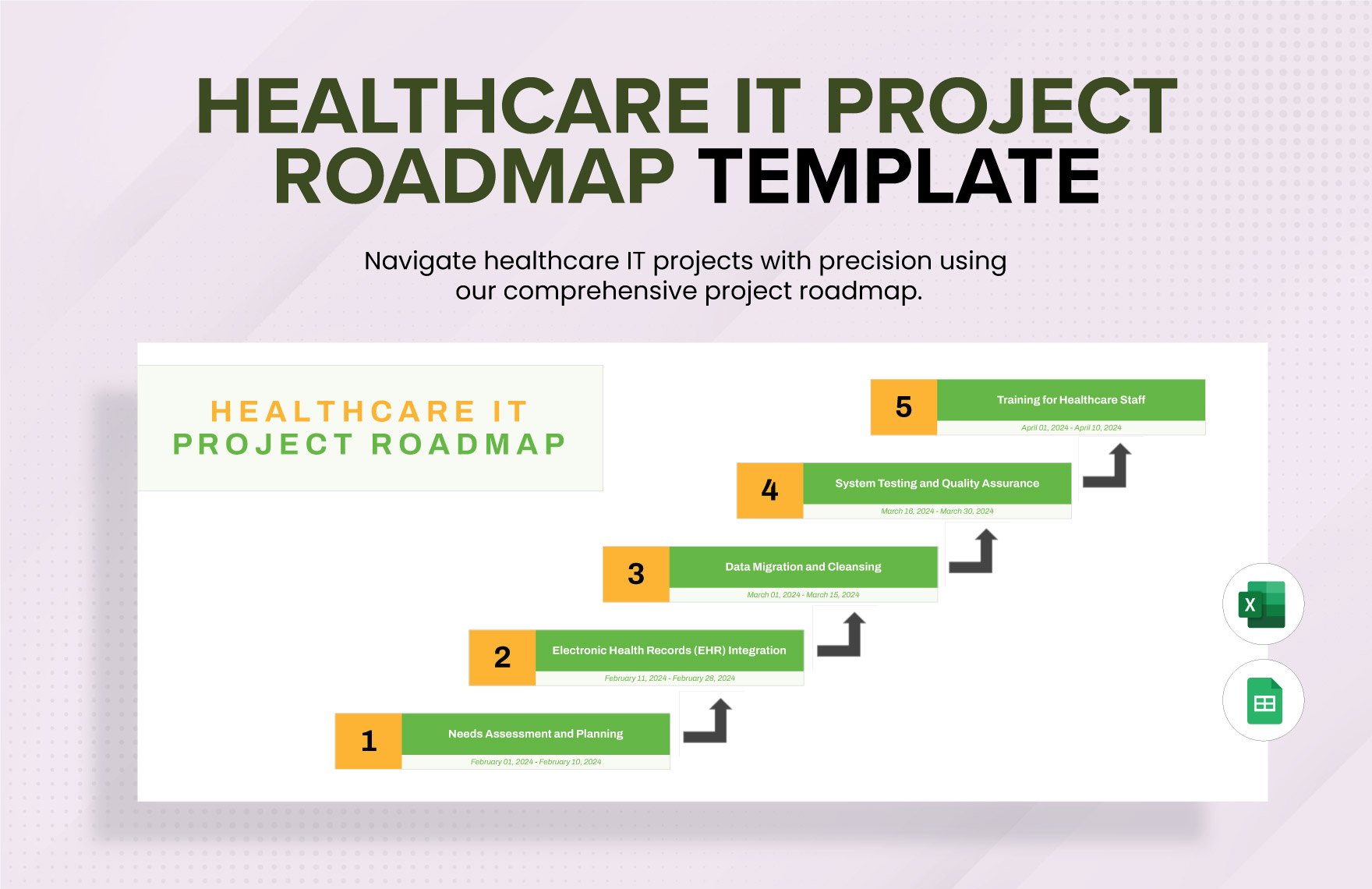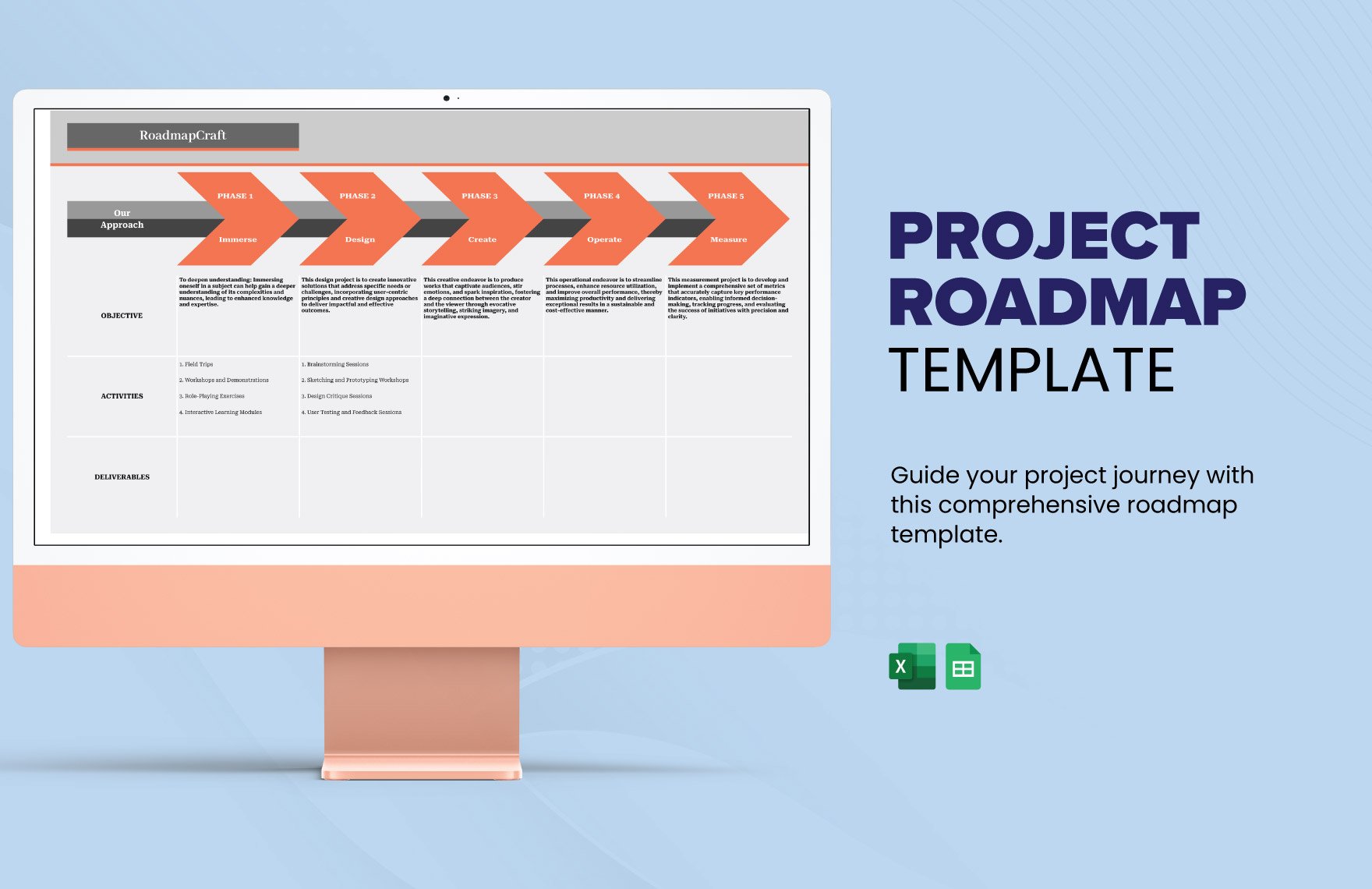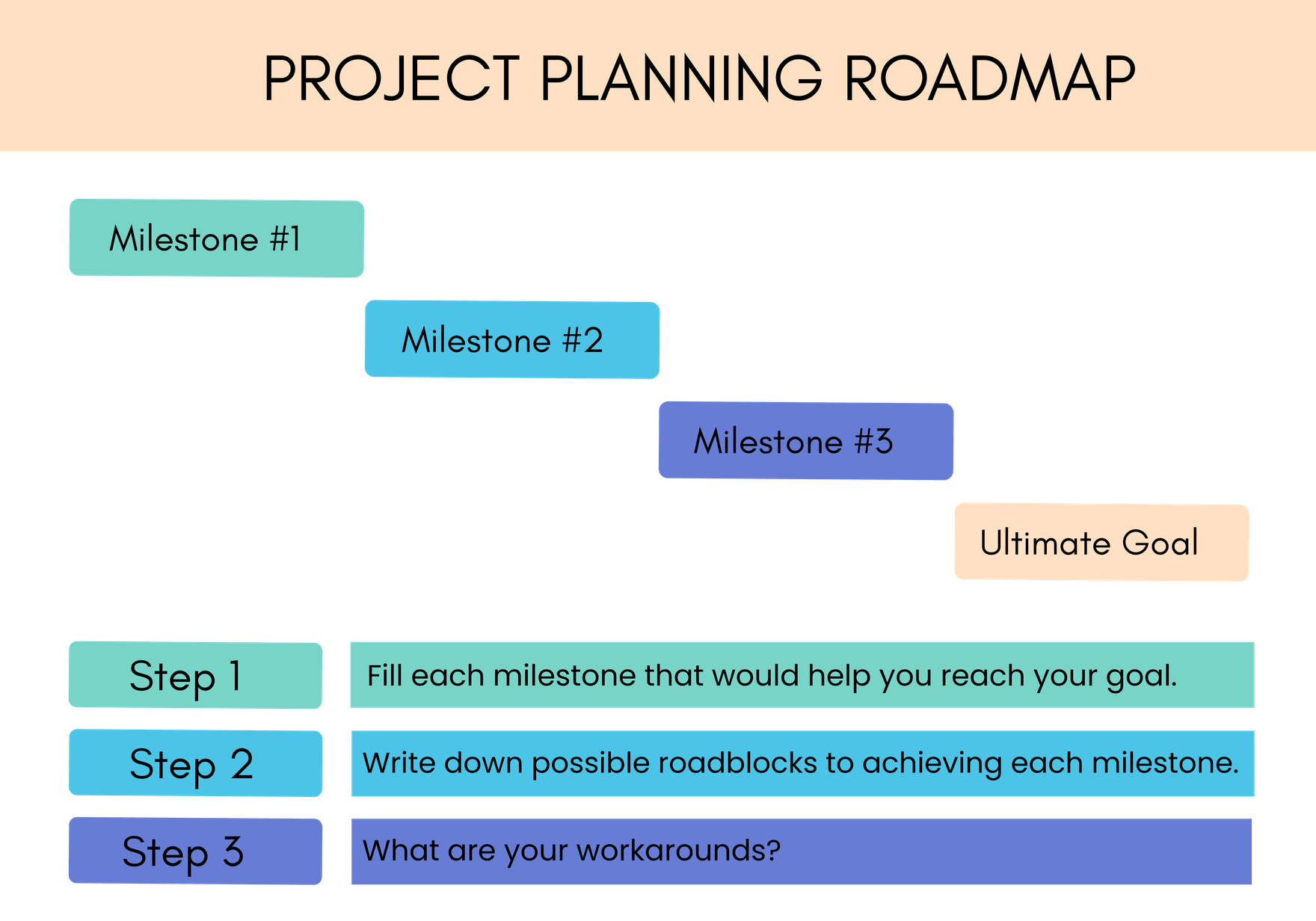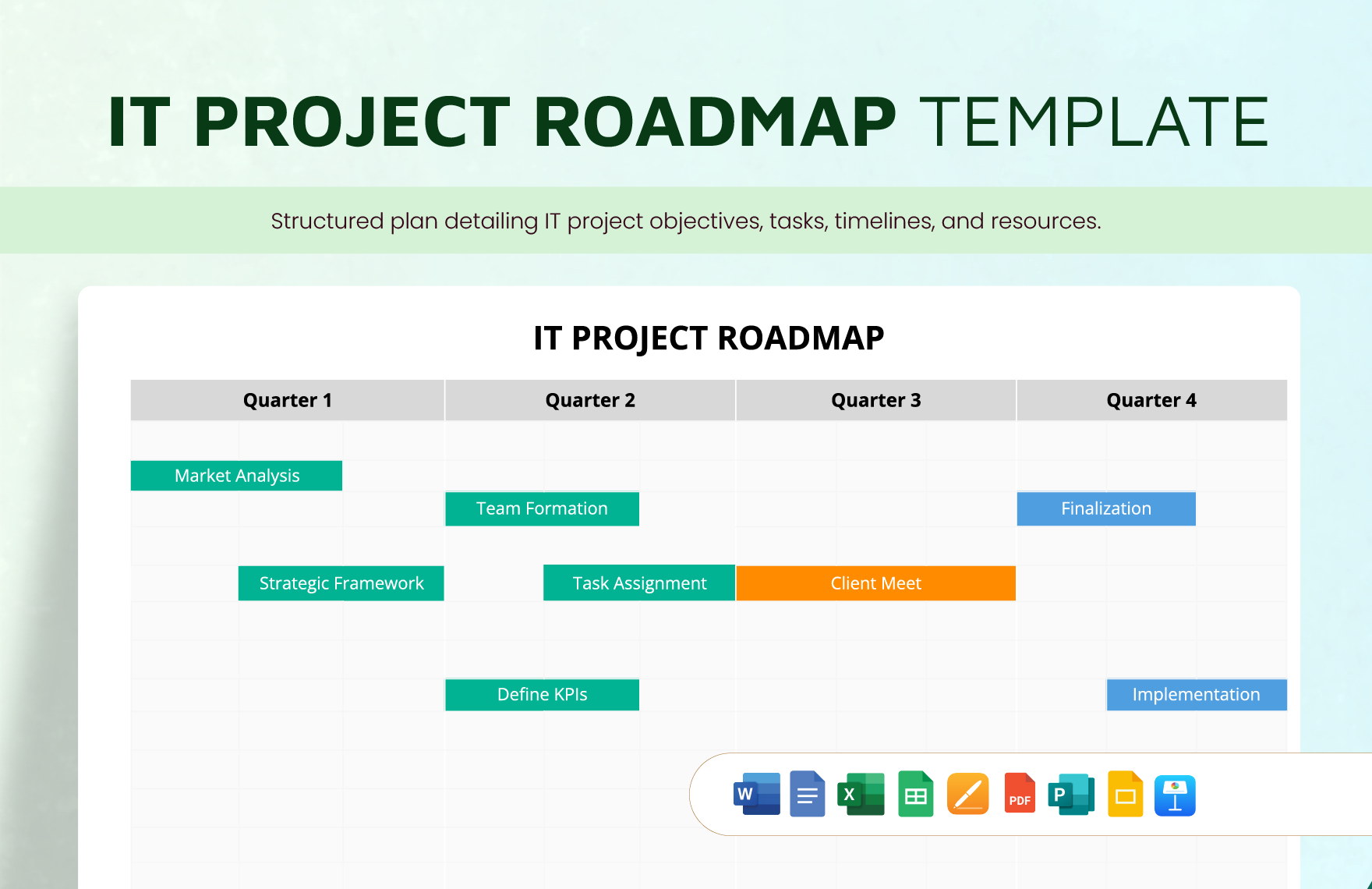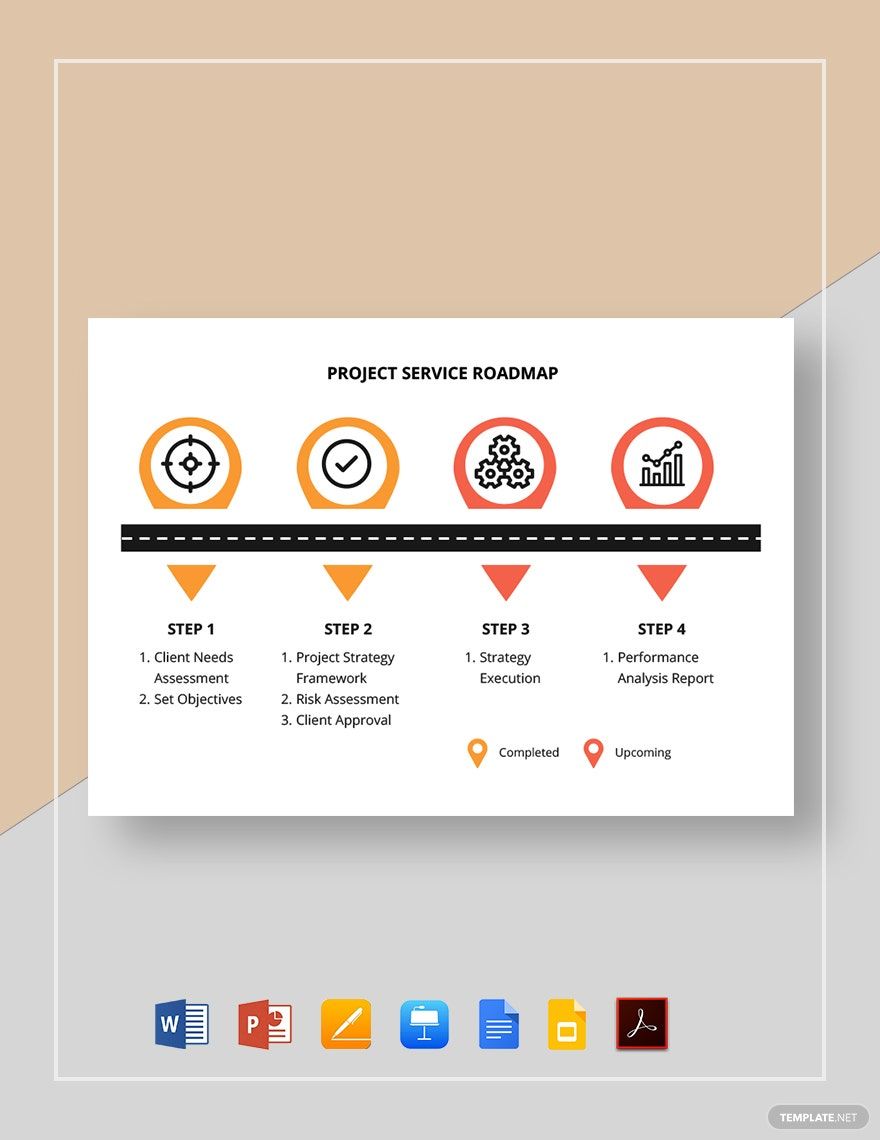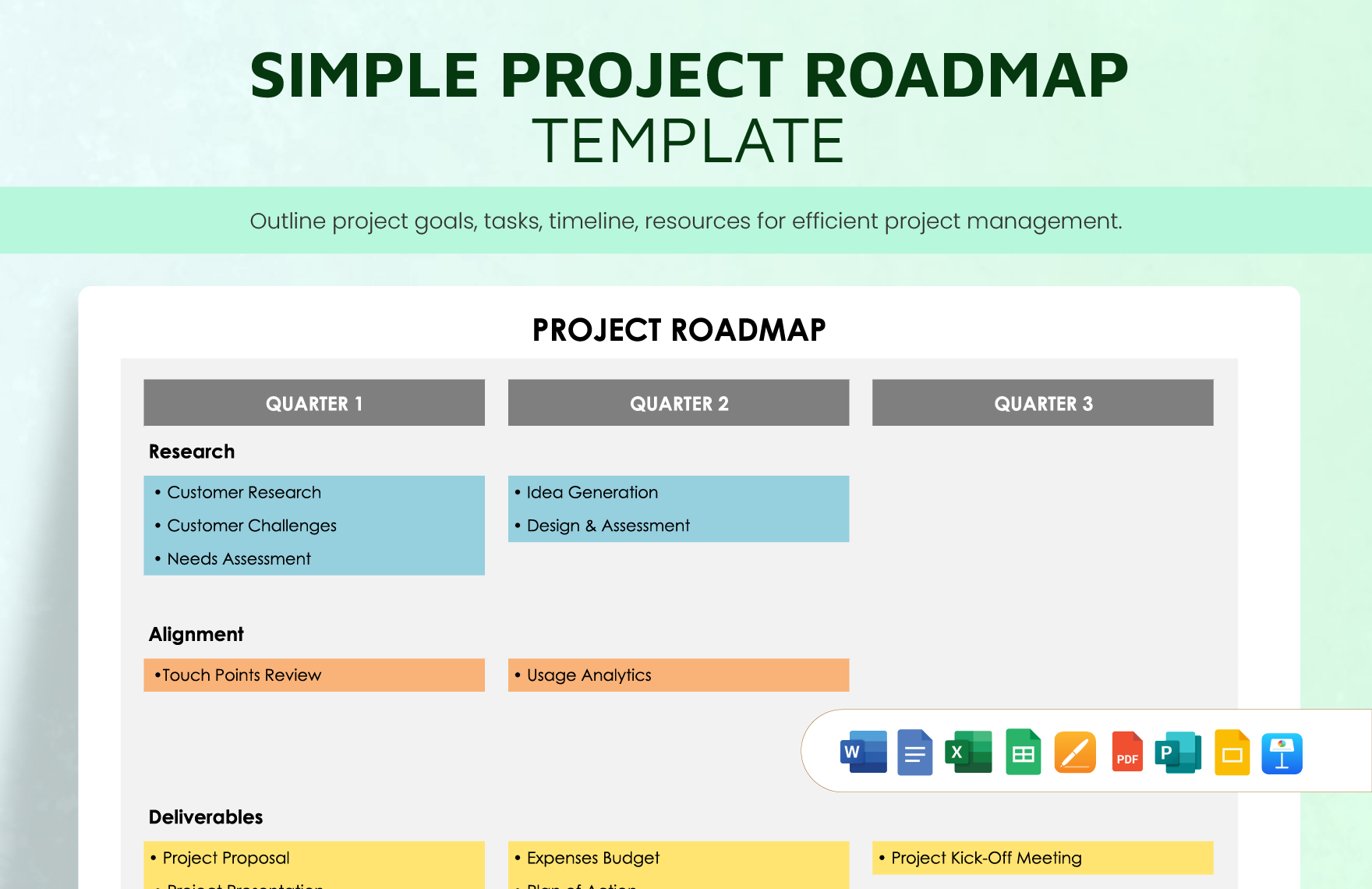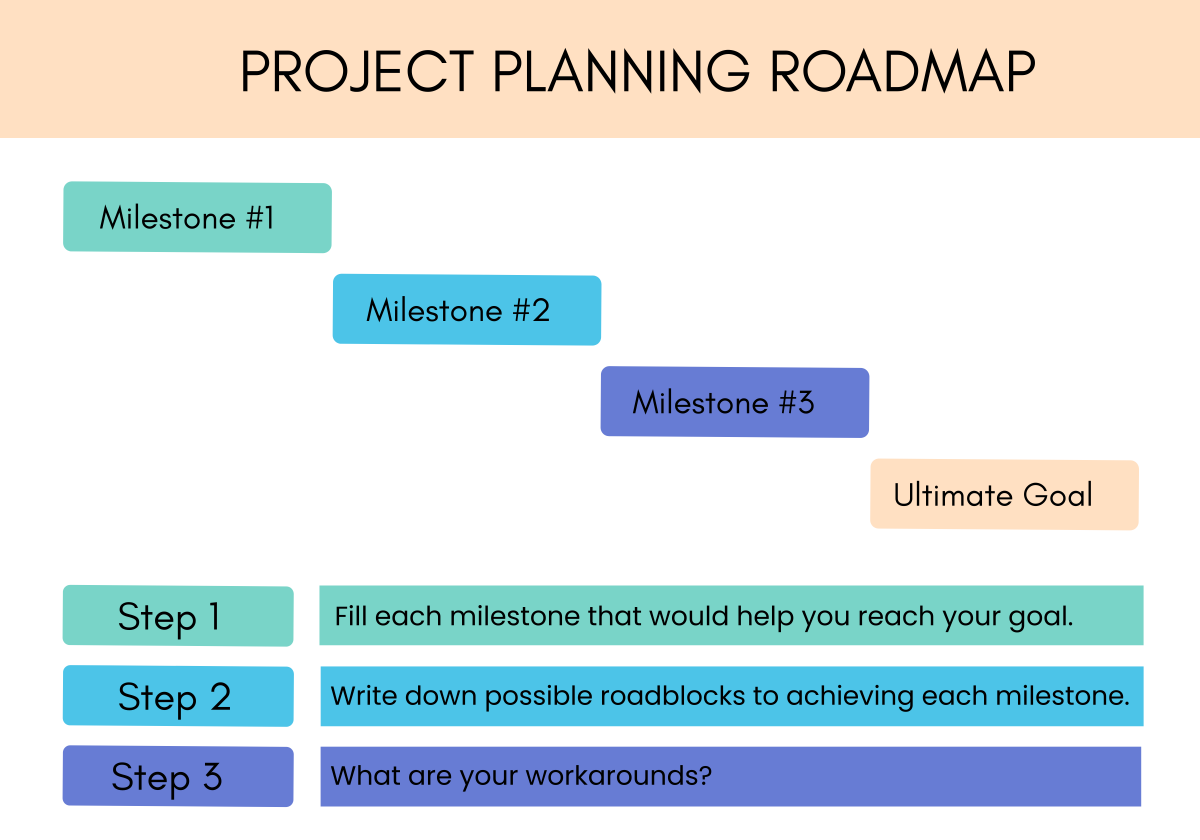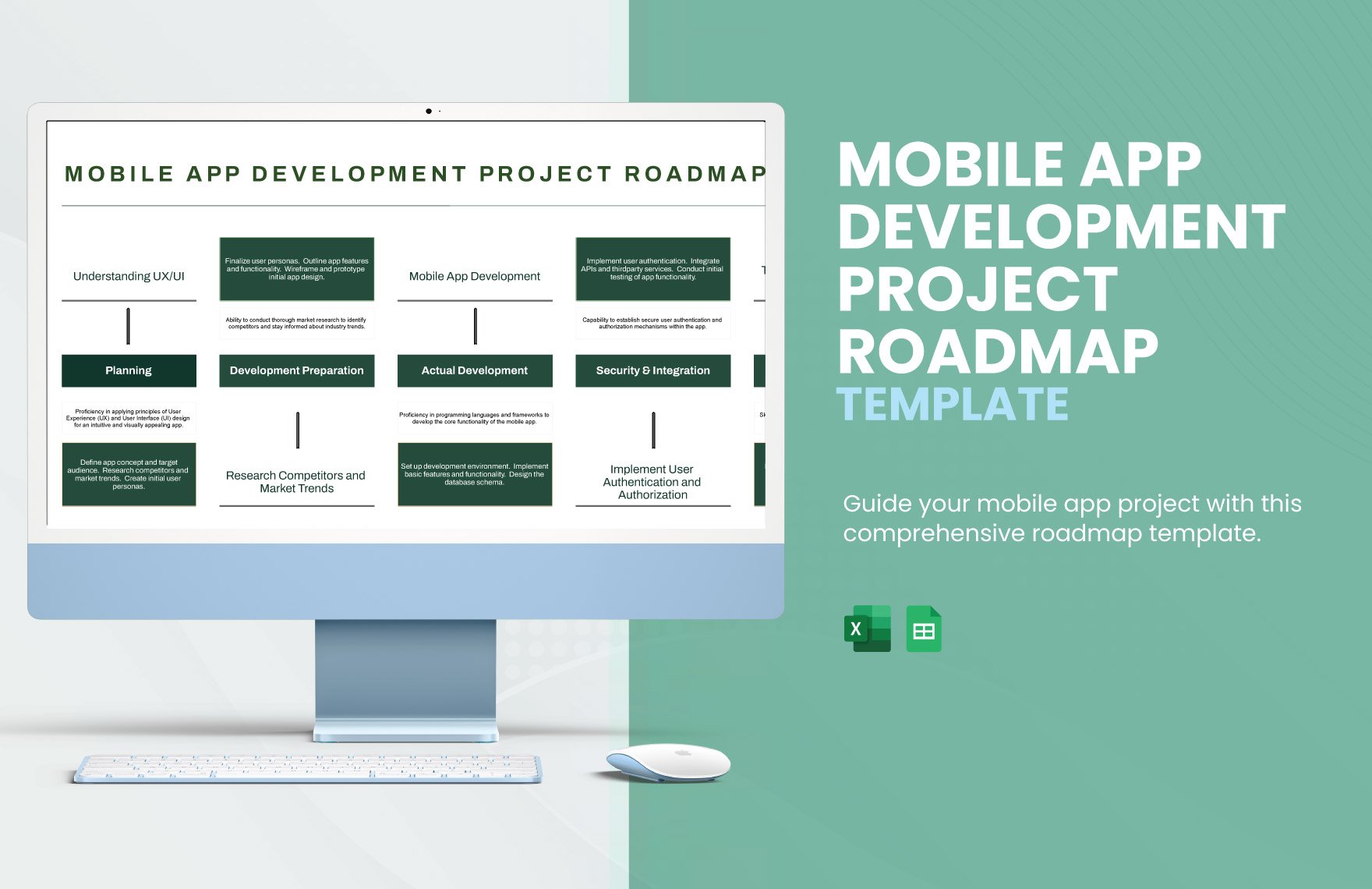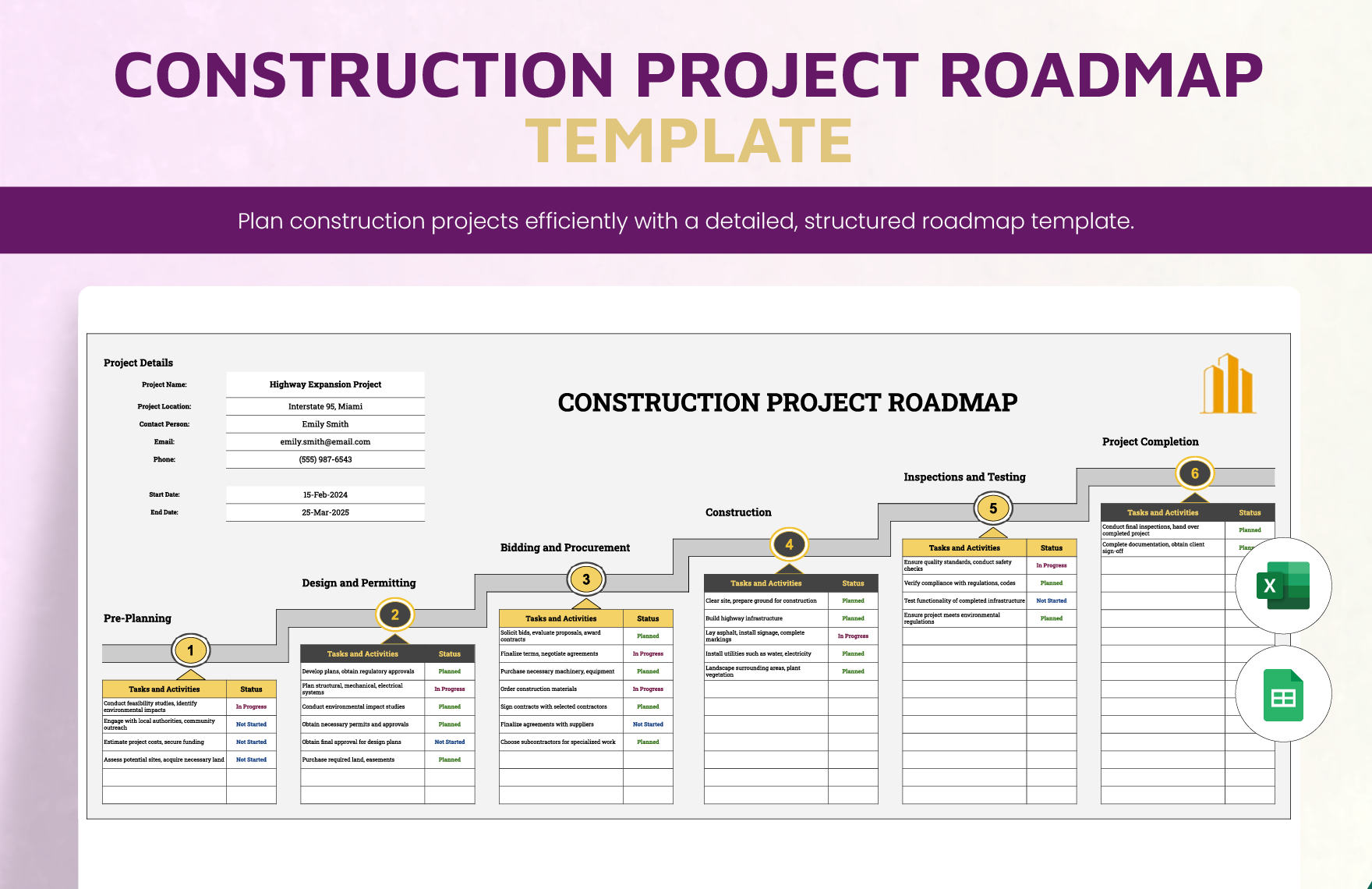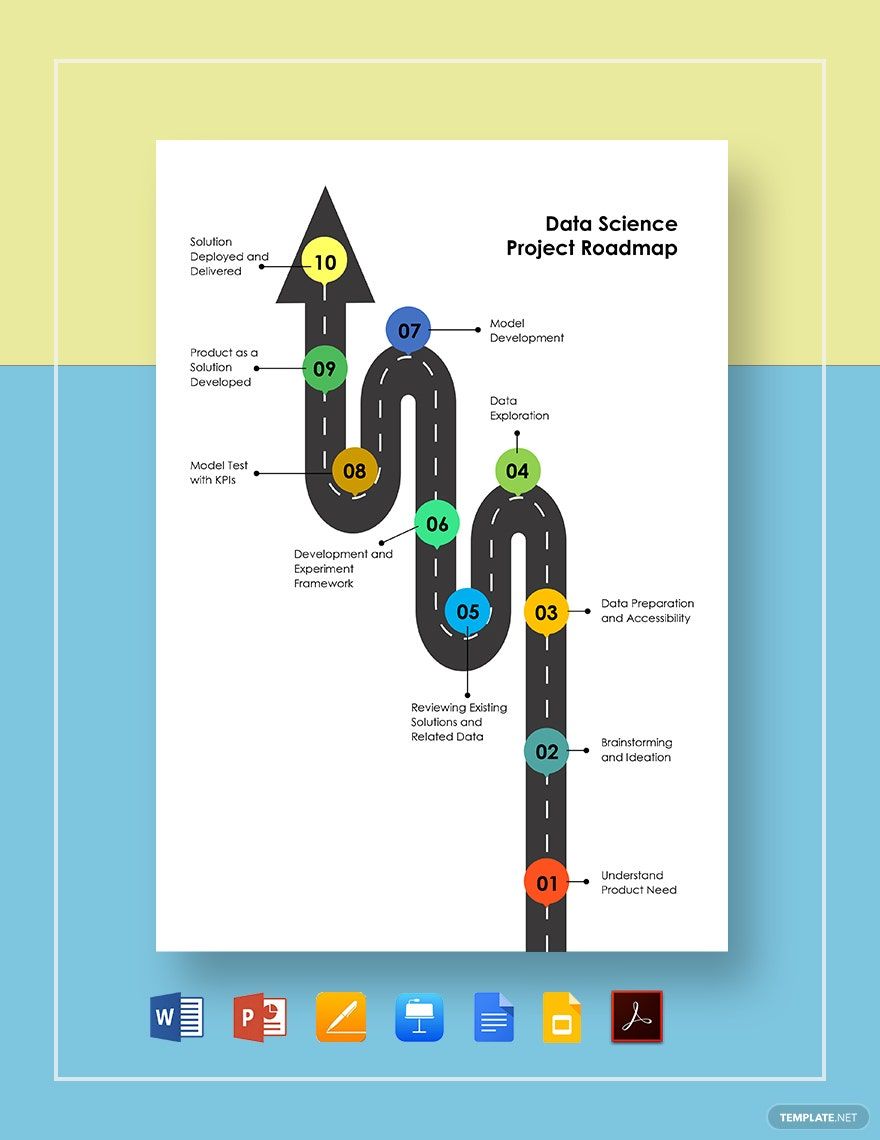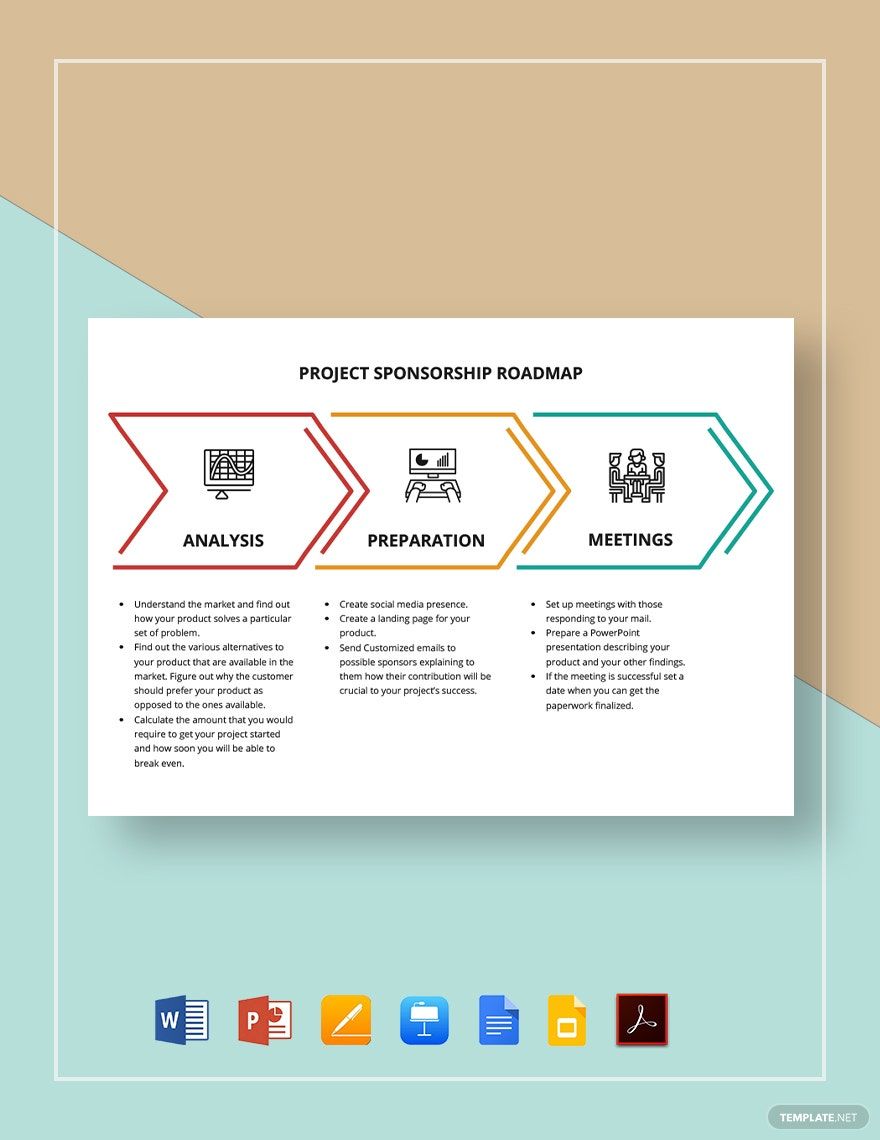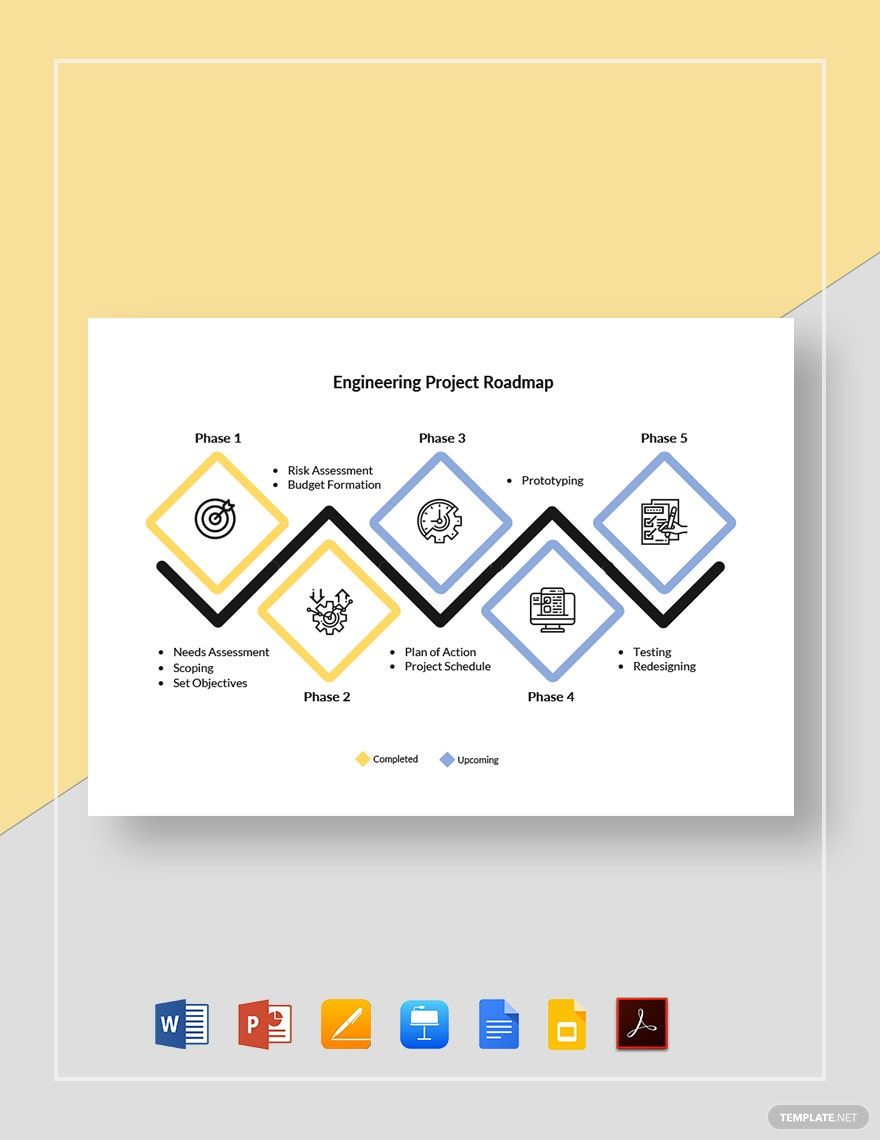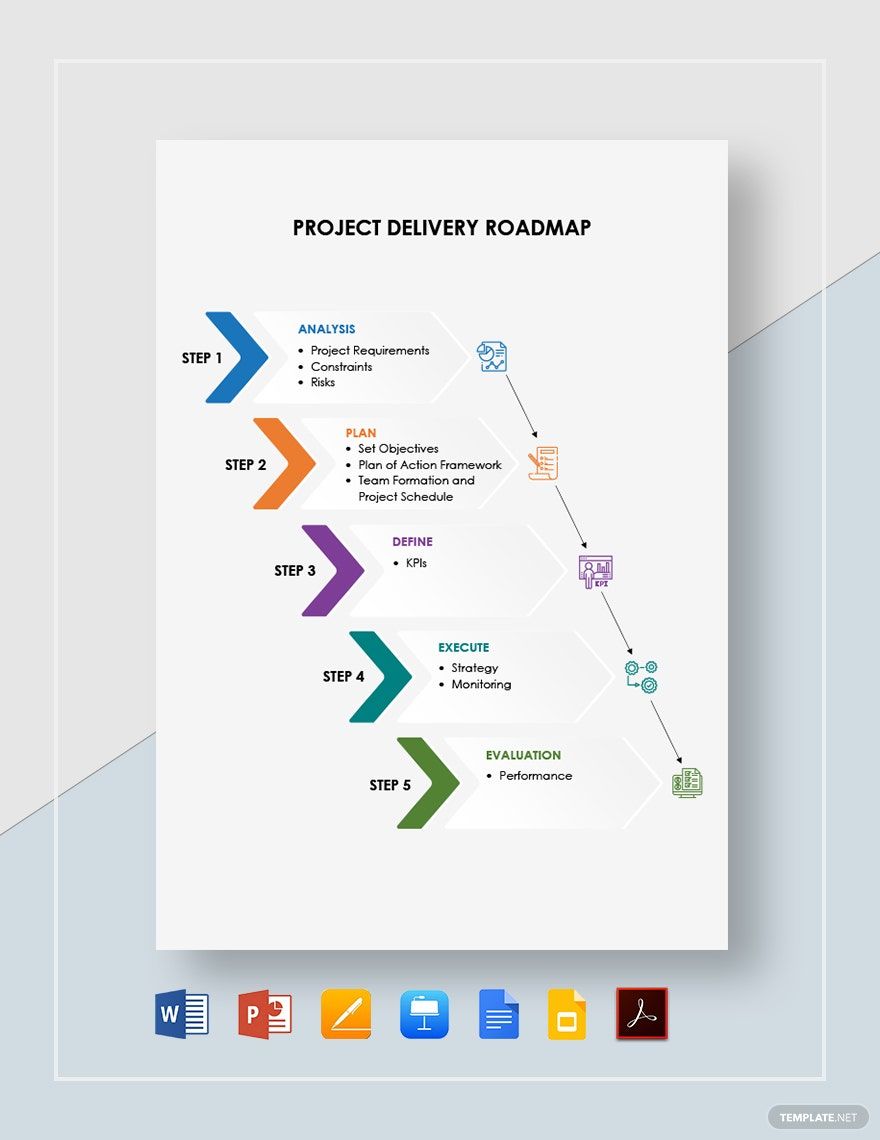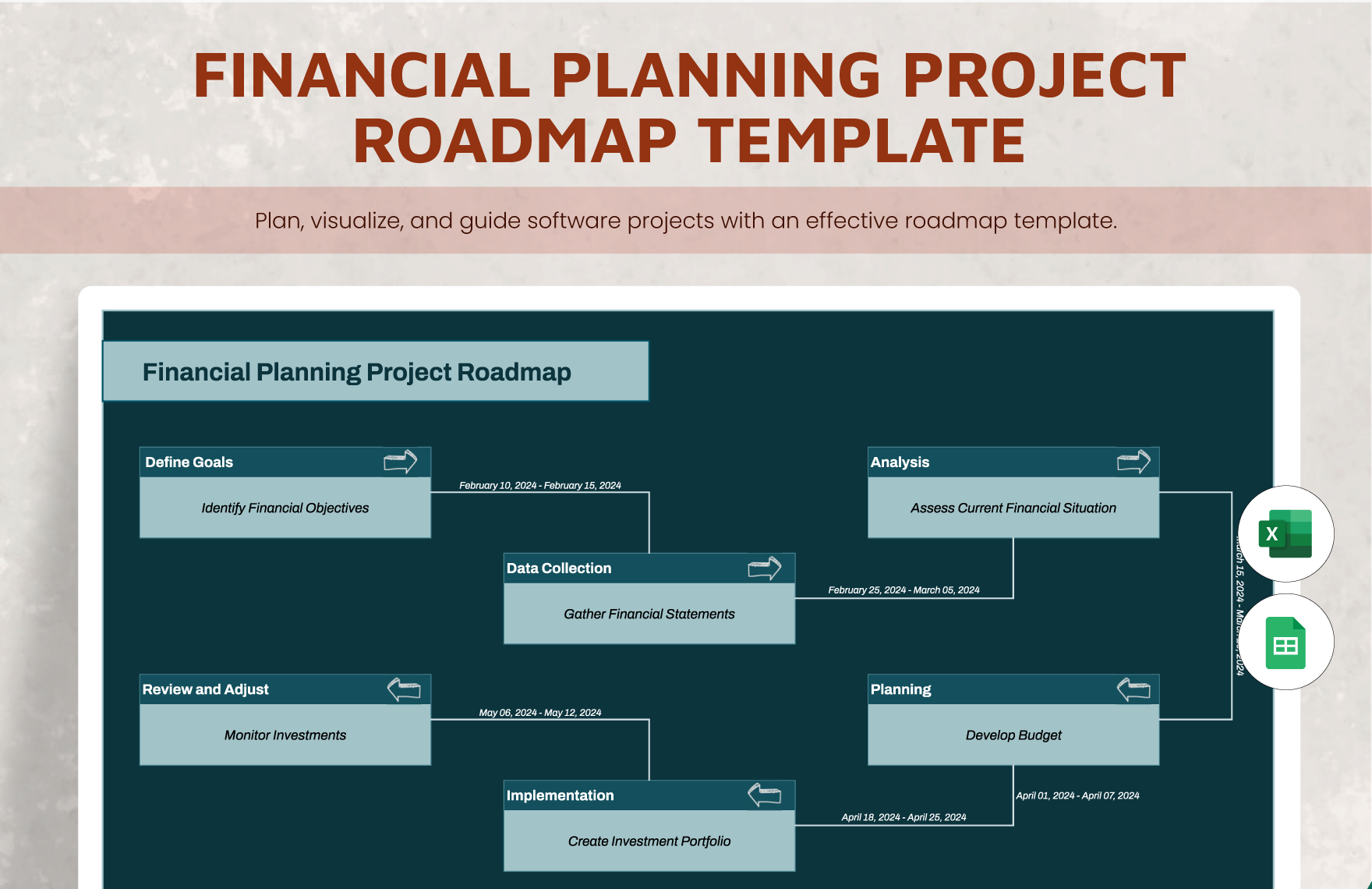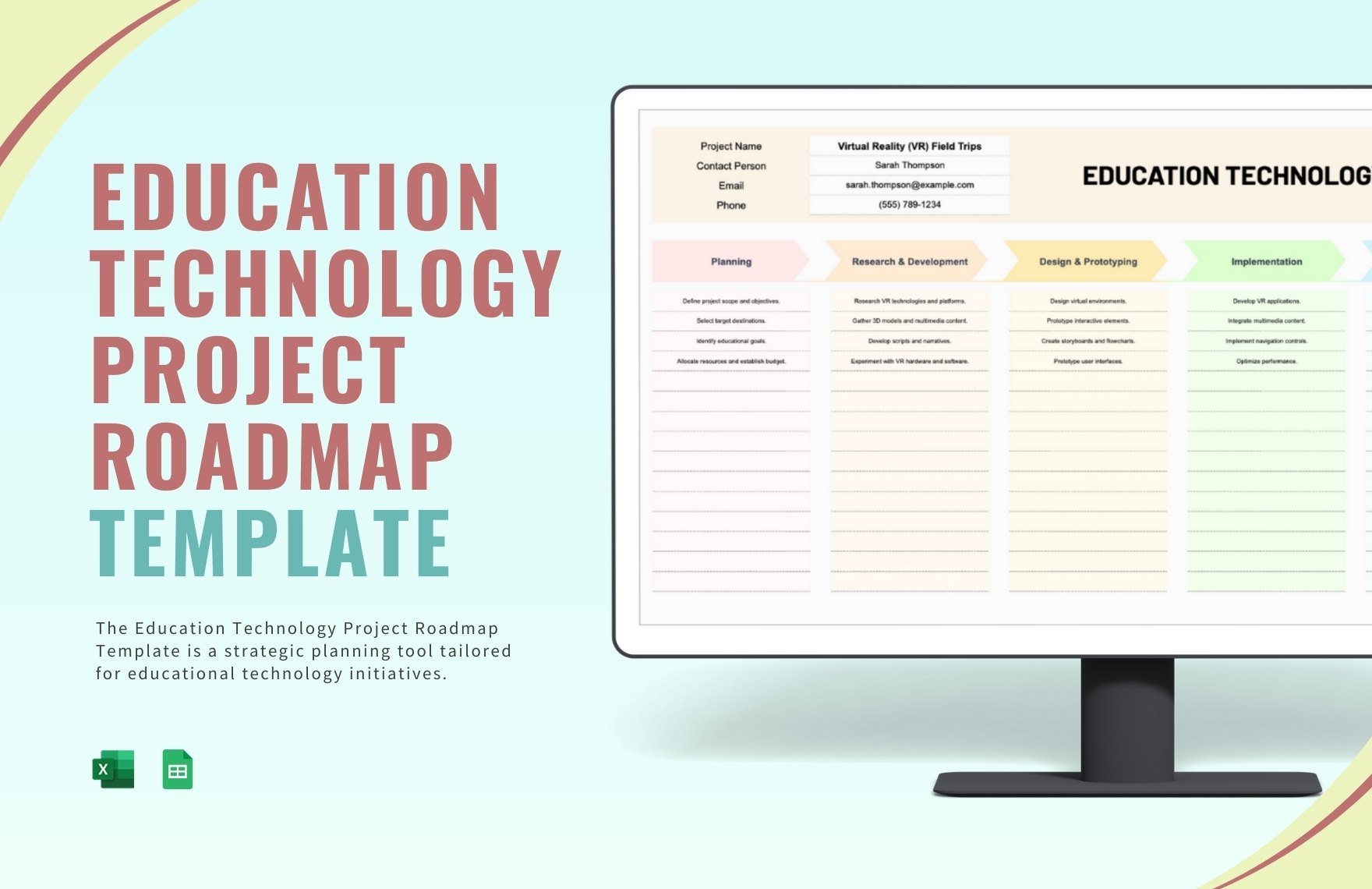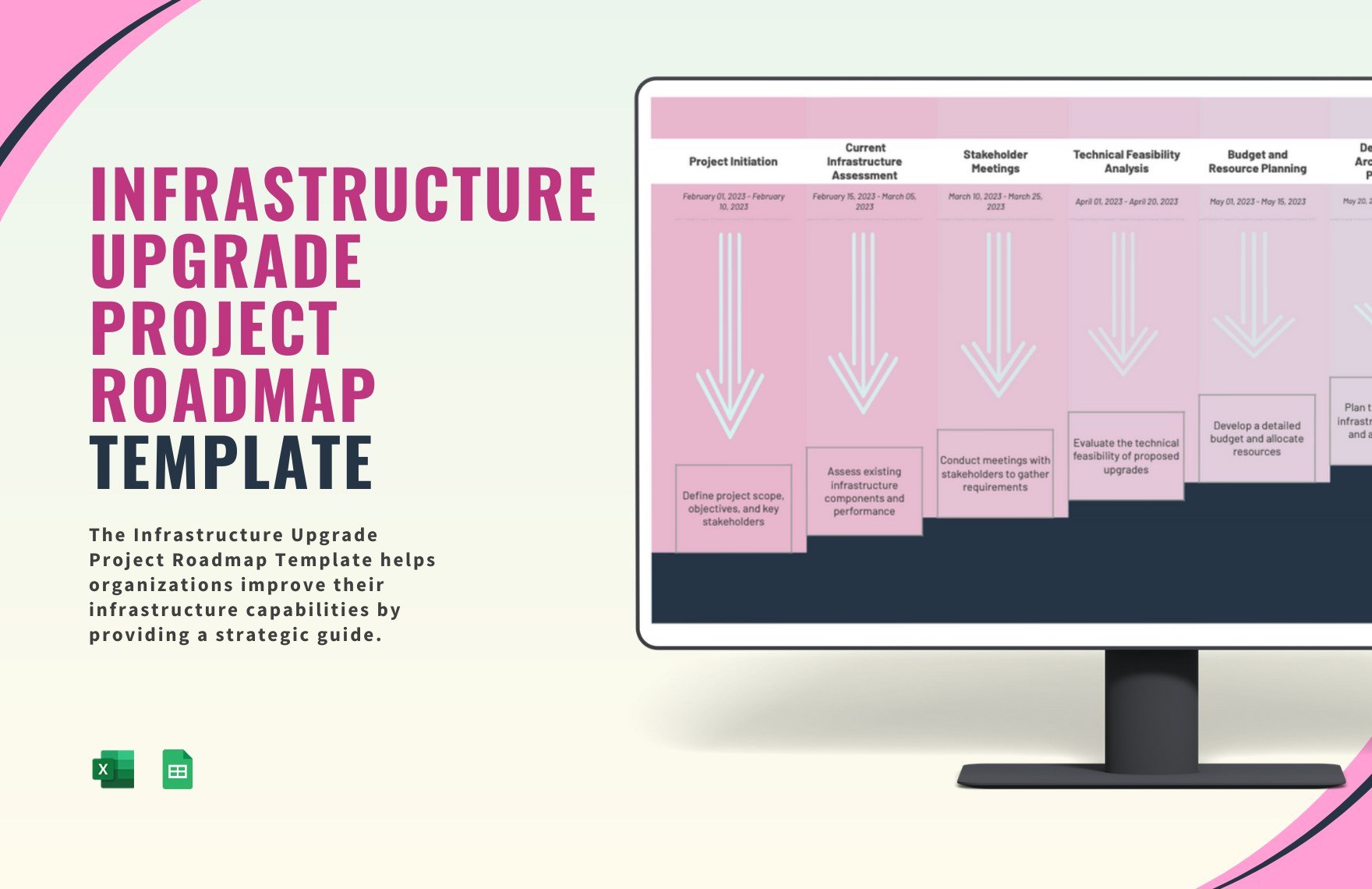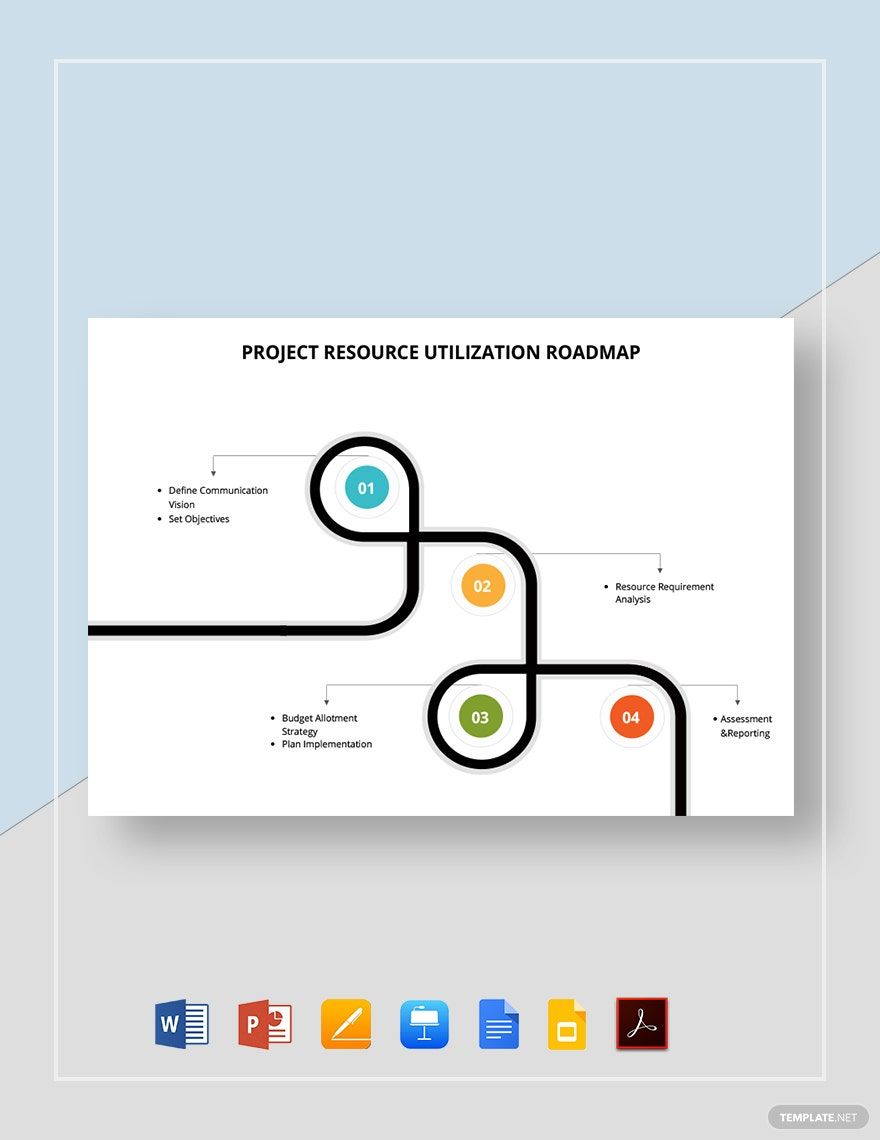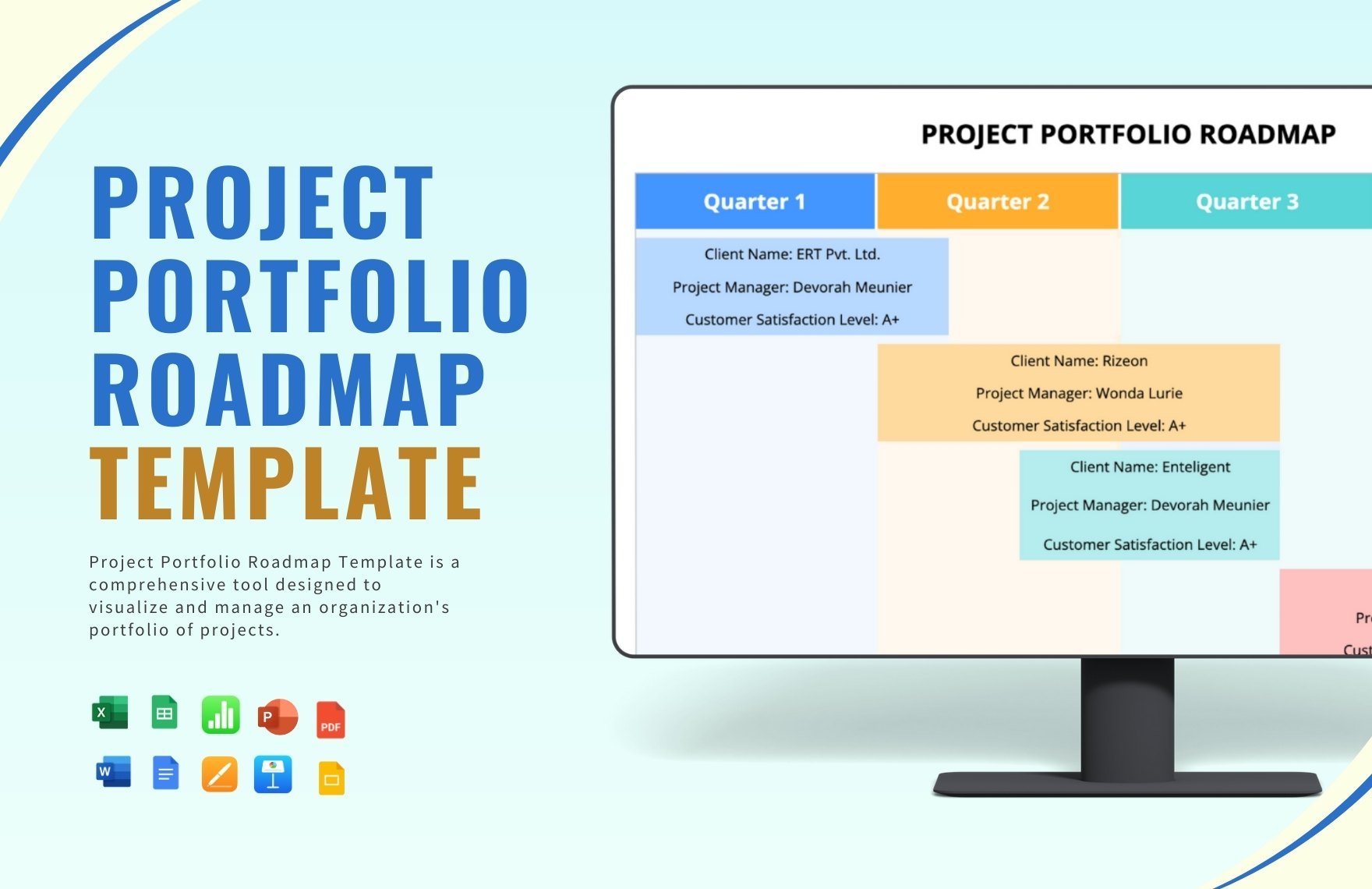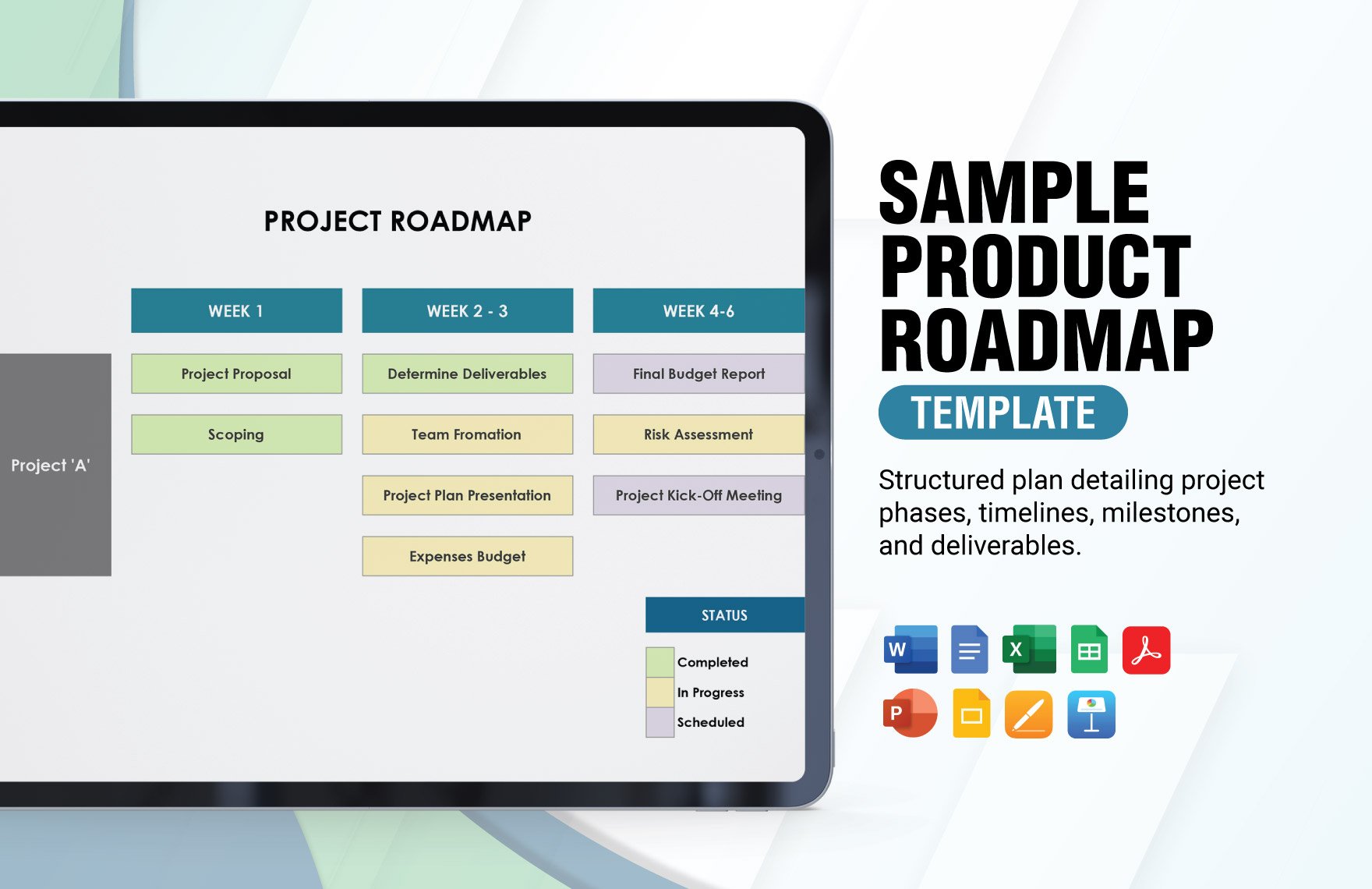Business analysts must have the ability to plan and execute their projects efficiently, and the roadmap for the venture is a primary visual resource for that. It is a crucial part of project management documents, from setting standards to informing investors and the board of directors. Without hesitation, create a useful project roadmap with the help of our ready-made and high-quality Project Roadmap Templates that are available in various file formats including Microsoft Word, Apple Pages, Google Docs, and Adobe PDF. Our professionally designed templates come with 100% customizable graphics and easily editable content placed in a well-arranged layout. Download now to save yourself the time and effort!
What is a Project Roadmap?
A project roadmap is a high-level and easy-to-understand analysis of a project plan's crucial elements. It is a tool used for communicating and coordinating the goals of the process, significant achievements, main outcomes, and associated risks. Businesses also use this to present an overview of the plan and manage the expectations of stakeholders.
How to Make a Project Roadmap
It's common for business analysts to get stuck throughout the specifics because of all the trivialities of a venture. Yet, how can you get rid of constant demands and conflicts and make an effort to see the whole context of a business plan to guarantee that you are moving to the right path? Luckily, there's always a space allocated to maintain timeliness in a project. Below are easy-to-follow steps to create a detailed project roadmap.
1. Select a Suitable Roadmap Software
Just like in any type of graphic resource, selecting the appropriate software should be an important thing to consider when creating a roadmap. This action is essential as the findings will remain with you for the production of the project. Based on what resources you choose, you can preserve numerous hours of quality work. In the end, your plan can either make your life easier and help your group to reach your goal or confuse the investors.
2. Establish a Clear Objective
It would be best if you are explicit about the purpose of your business roadmap before you start writing and incorporating the data. Considering this before proceeding to the next step is really essential since you might be spending a lot of time designing a visually appealing roadmap without knowing that the result is not beneficial to the intended market.
3. Determine Relevant Data
Depending on the goal, you have to determine the key data elements that will be shown in your roadmap. You can do this by checking the plan agreement and timetable. Afterward, identify the key tasks and record both the start and end periods. If your sample roadmap will involve various workstreams, ensure that you consider the process as well.
4. Develop a Timeline
After collecting all the important data, you will have an overview of the schedule that you need to present. The timeline will indicate the initial period and final date of the tasks while determining milestones or important points in the timetable. Before proceeding to the next step, make sure to adjust the timeline to clearly show all the details in just a single page.
5. Prepare your Roadmap Model
Next, you will need to create an outline of what details you need to draw in the career roadmap. If you're worried about how you can visualize the information, you can connect each task to key points in the roadmap by illustrating the activities on the timetable. Thus, investing time in making a model can be beneficial and effective.
6. Review the Model
According to PM Majik, it is a good idea to evaluate a model before submitting the concept into digital form. It is also a must to verify that all elements are represented and that the design is engaging. Lastly, you must communicate with the investor after realizing the project roadmap and final tests have been performed. If the development plan needs to be modified, all changes should be identified.
